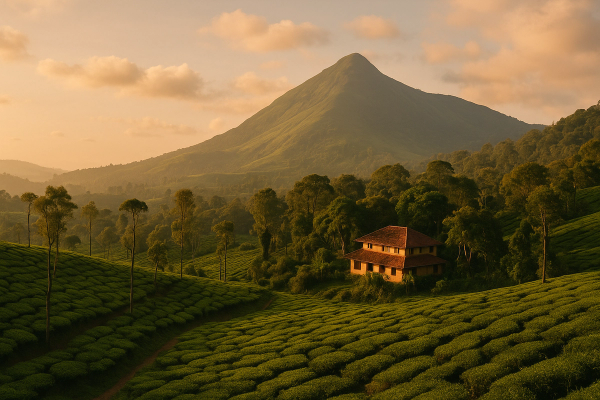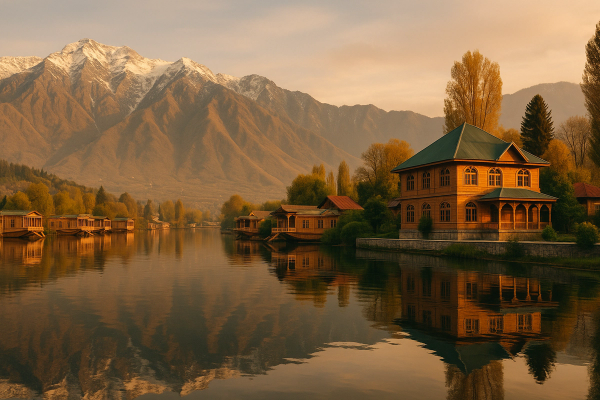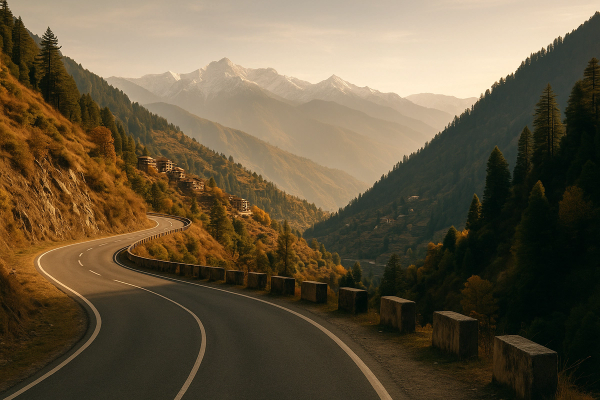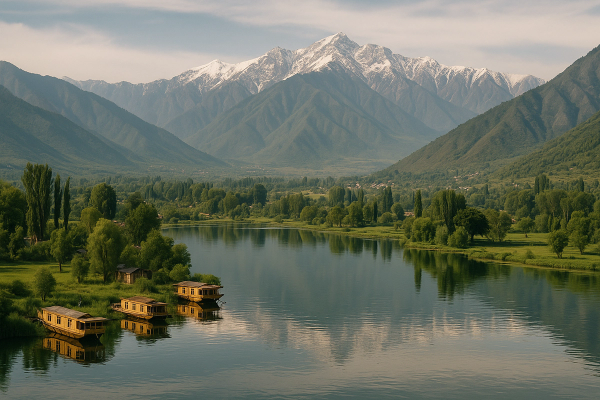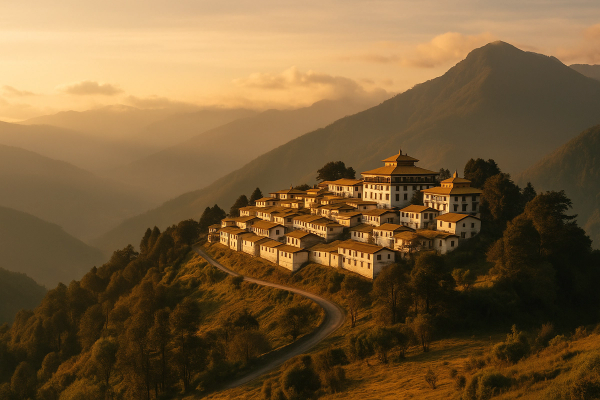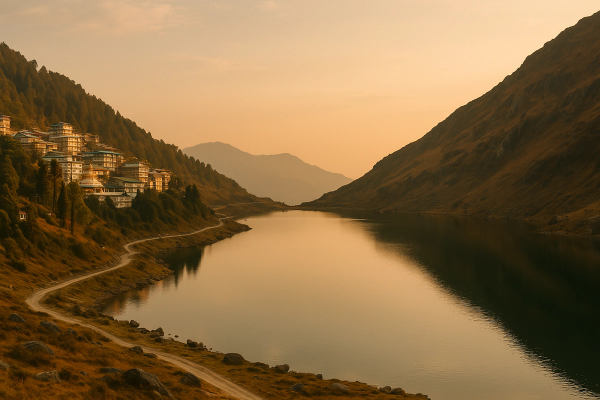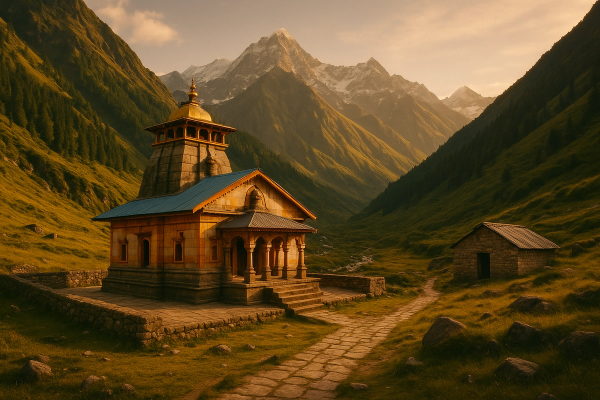Vegan Food Trail South India: Plant-Based Restaurant Guide — what I actually ate in 2025#
So, I finally did it. I took two months and zig-zagged across South India chasing vegan food, coconut aromas, messy markets, and way too many cups of filter coffee I kept trying to veganize. I’d been hearing that South India’s kinda the holy grail for plant-based folks — you know, dosas and idlis and chutneys that don’t need any of that dairy drama — and in 2025 it feels even more true. More places had oat or almond milk, menus marked vegan clearly, and owners who actually knew what vegan meant, not just “no egg, no meat” and then giggle while dropping ghee on everything. I messed up a few orders (me and him went with the wrong thali once and it was basically yogurt city), but overall… magic. Sticky-fingered, sun-scorched, spice-happy magic.¶
Why South India, why now (and what changed in 2025)#
Honestly, it’s the vibe. South India’s food is already heavy on legumes, rice, coconut, seasonal veg, stuff like jackfruit, and millets (ragi, bajra, jowar) which got super trendy after the whole Millets push the last couple years. In 2025 I noticed more places bragging about millet menus, plant-based milks in cafes from Chennai to Kochi, and supermarkets stocking Goodmylk, Sofit soy milk, almond milk, oat milk, even peanut curd in a couple health stores. UPI QR codes everywhere meant I wasn’t digging for cash every five minutes. And train connectivity’s wild now — those shiny Vande Bharat trains make city-hopping easier than I remember.¶
- UPI payments are basically universal, even tiny chai stalls wave QR stands at you
- Vande Bharat routes connect major southern cities faster, comfy AC chair cars and good legroom
- Millets are not a fad anymore here — ragi mudde, foxtail millet pongal, even millet dosas show up on menus
- Plant-based milks are easier to find in bigger cities, less so in small towns — bring your own if you’re picky
Travel and visa in 2025 (what actually worked for me)#
I entered on an India e-Visa (tourist). Still the easiest for folks from the US, UK, EU, and a bunch of other countries. Apply online, upload your photo, passport, pay the fee, then you get a PDF approval to carry. Make sure your passport’s got 6 months validity and enough blank pages. In 2025 there weren’t any COVID test requirements for entry (phew), and no surprise quarantine rules either. The usual immigration queues apply, so keep your docs handy and don’t overpack the carry-on like me. If you’re doing longer stays, double-check the e-Visa category — there’s 30-day double entry, 1-year multiple entry, and 5-year multiple entry options available for many nationalities. No visa-on-arrival for most people, so don’t risk it. Little note: some wildlife reserves do require permits for entry, but nothing weird for just food travel. And internal flights and trains were chill — IRCTC for trains still works, but I preferred booking Vande Bharat seats a few days ahead since they do fill up.¶
Chennai: first-stop idlis, hot air, and a whole lotta chutney#
Chennai hit me with that humid seaside wall of heat and straight-up kindness. My first day I wandered Besant Nagar and tried veganizing a classic breakfast: idli-sambar. Ask for no ghee, no curd, and you’re usually safe. I found almond milk at a couple coffee spots near Elliots Beach. The place that stuck with me most was Lyfe by Soul Garden Bistro — lots of plant-based options, clearly marked, good salads, and a cauliflower-based pizza that didn’t make me miss cheese. Pumpkin Tales did me a solid too with their almond milk cappuccino and a surprisingly hearty vegan bowl (quinoa, roast veg, peanut dressing that I may have licked off the spoon, don’t judge). Filter coffee is everywhere, and yeah, most of it’s with dairy, but some cafes now offer alternatives — ask gently, smile, you’ll often find a workaround.¶
Three things I’d repeat in Chennai, every time#
- Get your breakfast early. Idlis and dosas taste different when the griddle’s in full swing at 7am.
- Say it clearly: no ghee, no butter, no curd, no paneer. People will help you tweak.
- Catch sunset by the beach and then hit a veg spot — veganizing South Indian thalis can be done if you talk to the server.
Puducherry & Auroville: crunchy granola soul, but delicious#
I took the ECR coastal road to Puducherry and felt my shoulders drop about three inches. Tree-lined streets, bougainvillea, and cafés that feel like they’ve been there since forever. Auroville is like vegan Disneyland if Disney had farms and gentle cats and quiet mornings. Bread & Chocolate is still the go-to — their dark chocolate treats, smoothies, and bowls were easy to veganize, and the almond milk situation was solid. Solitude Farm Café? Oh man. It’s farm-to-table, mostly organic, with lots of vegan options depending on the day’s harvest. I had a jackfruit stir-fry with local greens, red rice, and a ginger-lime thing that made me want to request seconds in an embarrasing voice. There’s something about Auroville that’s, I dunno, slower. You eat and elbow-shrug and you remember what food tastes like when it wasn’t overcomplicated. Also the bakeries: many have dairy, but more places understood vegan swaps than I expected in 2025.¶
I swear the jackfruit at Solitude tasted like it just decided not to be meat today. Tender, a little smoky, absolute comfort.
Bengaluru: where vegan feels normal, not novelty#
Bengaluru is where I stopped asking for vegan and people started nodding like “yeah, cool.” The scene’s on another level. Justbe Resto Café in Sadashivanagar focuses on whole-food plant-based — I had a millet biryani that felt like a warm hug from someone who cares about your gut microbiome. The Green Path – Forgotten Food is exactly what it sounds like: spotlight on millets, native grains, seasonal produce. They had ragi dosa and a foxtail millet payasam that was already dairy-free. Sante Spa Cuisine’s another good bet — beautifully plated, lots of vegan choices across their outlets. Supermarkets here stocked Goodmylk oat milk and peanut curd, plus vegan mayo and cheese. Cafes had alt-milks as normal, not a weird exception. And yes, I did a ragi mudde lesson with a homestay auntie who told me, tactfully, that I was holding the ball wrong while laughing at me. Best kind of laugh.¶
Mysuru day-trip: unexpected gem in a calm city#
Mysuru’s just a couple hours away now on faster trains, and Depth N Green made me rethink what a simple veg café can do. Smoothies with coconut milk, clean plant-forward plates, and servers who know what vegan means — they helped me avoid ghee stealth mode. I wandered the palace in the late afternoon, ate a plate of lemon rice that looked like sunshine, and bought a pack of local roasted peanuts because god they were fresh. If you’re in Bengaluru longer, pop down to Mysuru for a day. It’s quieter. You breath different.¶
Kerala coast: Kochi, Alleppey, and the coconut chapter#
Kerala had me straight-up swooning. Fort Kochi lanes, art galleries in old buildings, and cafés where vegan requests didn’t feel like I was asking for the moon. Farmers Café did me right with a veg-forward menu and a couple easy swaps to make dishes fully vegan. Pepper House Café was artsy and relaxed; I got a veg wrap with hummus and lotsa greens. Houseboat in Alleppey? Yes. Do it. But set expectations — a lot of standard meals use ghee or curd. I messaged the operator before booking and asked for a fully plant-based menu: Kerala red rice, thoran (stir-fried veg with coconut), avial minus curd, sambar, chutneys, and stews with coconut milk. We watched the backwaters go glassy at sunset and ate steaming veg curry with appam. I nearly fell into a nap right on the deck. Trivandrum had decent cafés with alt milk too, plus classic Kerala meals that are naturally dairy-light. It’s coconut territory. Golden.¶
Quick Kerala caution for 2025#
Monsoon’s been intense the last couple years, and 2025’s rain warnings are similar — June to September can mean flooded roads, delayed trains, and mosquitoes. I carried repellent religiously and wore light long sleeves at dusk. And for houseboats: check safety ratings, lifejackets, and make sure they confirm your vegan menu in writing. I got lucky, but a friend had paneer show up uninvited and it was an awkward dinner.¶
Hyderabad: spicy, techy, and surprisingly vegan-aware#
Hyderabad surprised me. It’s known for biryani, which is often not vegan, but the city’s indie cafés and vegan joints are coming up. Terrassen Café is the plant-based spot I wish every city had — entirely vegan menu, relaxed vibe, good coffee. I had a tofu kathi roll and a brownie that did not try too hard. Smart Alec – Alternative Diner in Banjara Hills had playful plant-based takes on comfort food, and staff who were enthusiastic about switching out any sneaky dairy. Mainstream places did have vegan-friendly dishes if you ask: dals without ghee, breads without butter, rice plates with vegetable curries. The chai situation’s still mostly dairy, but I found almond milk at a couple cafés without even asking. That felt futuristic, in a nice mundane way.¶
Small-town detours: Hampi, Coorg, and getting by with hand signals#
The smaller places are where you feel the heartbeat but also work a tiny bit harder to keep it vegan. In Hampi, Mango Tree remains my go-to — big veg plates, fruit bowls, and staff who didn’t bat an eyelid when I said no butter, no curd. In Coorg the homestay owner made a vegan akki rotti and vegetable stew with coconut milk because she said her cousin went plant-based last year. Random chai stalls will offer black tea if you ask nicely. Thalis in local eateries can be a minefield with ghee, curd, and buttermilk. Say it clearly. Smile. Learn a couple words (no ghee, no dahi), and you’ll be fine. Also carry nuts, bananas, and a pack of roasted channa — lifesavers when your bus gets delayed and you don’t wanna settle for chips.¶
How I actually order vegan in South India without sounding like a jerk#
Okay, here’s the script I used that worked well in 2025. I say I don’t eat dairy and ask if they can make the dish without ghee, butter, curd, paneer, or milk. I ask if the dal tadka can be finished in oil instead of ghee. I check breads for butter. Filter coffee? I request black or ask for almond/oat milk if they have it. If I’m unsure, I order things that are naturally dairy-free: plain dosa, masala dosa (no butter), idli with sambar, tomato rice, vegetable biryani without raita, coconut chutneys, avial minus curd, thoran, rasam, appam with veg stew in coconut milk, poha without curd. And I watch for sneaky ghee — it loves to crash the party. You know, like that one friend.¶
2025 costs and getting around: not fancy, not broke#
I kept detailed notes because my brain loves lists (and then I promptly lost half of them). Here’s what I actually paid or saw as normal in 2025:
— Hostels in Chennai, Bengaluru, Kochi: roughly ₹700–₹1,300 per night in dorms, private rooms from ₹1,800–₹3,500.
— Mid-range hotels: about ₹3,000–₹7,000 per night depending on area and if there’s a festival week.
— Boutique homestays in Auroville/Puducherry: ₹1,500–₹3,000 for simple rooms, more for fancy ones.
— Kerala houseboats (1-bedroom private): ₹8,000–₹15,000 per night including meals, prices spike on weekends.
— Vande Bharat trains: AC Chair Car between major southern cities was usually ₹1,200–₹1,800, Executive Chair ₹2,500–₹3,500. Dynamic pricing applies, so earlier booking saved me the annoying jump.
— Uber/Ola worked in big cities, auto-rickshaws still king. UPI QR everywhere, cash useful in villages. SIM cards required passport and a photo, but I ended up with an eSIM from Airalo on one leg which was disturbingly easy (5G coverage in cities is increasingly solid in 2025).¶
Safety, heat, and a few 2025 realities I wish I’d known sooner#
Heatwaves: March to June can be brutal across South India. I carried electrolytes and drank coconut water like I owed someone money. Dengue’s a thing in monsoon season — use repellent, cover up at dusk, sleep with a fan or AC and keep windows screened. Tap water: I stuck to filtered or bottled, and refilled at cafés that offered filtered stations. Women travelers: I felt safe overall, especially in Kerala and Puducherry, but I used common sense — late-night rides booked with known apps, share location with a friend, trust your gut. Food allergies? Most kitchens are great if you explain, but cross-contamination is possible in busy places. And keep some rehydration sachets (ORS) in your bag. Lastly, the roads: scooters tempt you, but traffic can be chaotic. I did it once and then decided rickshaws are more my speed. My ego recovered eventually.¶
Trend watch: millets, jackfruit, and cafes that get it#
I saw three big vegan-adjacent trends in 2025: 1) Millets are mainstream — ragi, foxtail, little millet, all showing up in dosas, pongal, and desserts. 2) Jackfruit keeps starring as a meat substitute, but not in a gimmicky way. Kerala and Karnataka have always loved it, so you get dishes with history, not just influencer hype. 3) Cafés and health-forward menus labeling vegan dishes clearly. Bengaluru leads, Chennai’s catching up, Hyderabad is surprisingly bold, and in Auroville, you practically trip over plant-based bowls. Oh and alt milks are normalized in big city coffee shops. It makes mornings way smoother.¶
Little moments I still think about (random, but true)#
That time in Chennai when an uncle at the idli shop wiped a table for me and then gently told me I shouldn’t eat too spicy because I looked like I’d just got off a plane — he was right and the next sambar was milder, bless him. Auroville mornings where I carried my bowl to a quiet corner and could hear the wind. Bengaluru evening at Justbe where someone next to me explained why their mom switched to millets and now her energy levels are better. A Kochi houseboat staffer who welcomed my vegan requests with a smile and then cooked twice as much veg because he said it’s lighter in the heat. A fruit seller in Mysuru who slipped an extra mango into my bag saying “for the road” and walked away before I could pay for it. You remember people more than places sometimes.¶
Mistakes I made so you don’t have to#
I asked for "no dairy" at one place and forgot to mention ghee, which is clarified butter and basically dairy’s stealth ninja. So yeah, always say no ghee. I didn’t carry snacks on a bus ride and ended up eating a pack of salty chips that made me feel like a thirsty cactus all afternoon. I booked a houseboat late and paid weekend rates like a chump. I wore open sandals and the monsoon roared, so my feet had their own private swimming pool. And once in Hyderabad, I tried to explain vegan in a rush and the waiter thought I wanted “vegan paneer” which is not a real thing unless you bring your own, which I did not. Slow down. Be clear. Smile. It’s fine.¶
Vegan dish cheat-sheet I used on the go#
- Plain dosa, masala dosa (ask no butter/ghee), ragi dosa in Bengaluru
- Idli with sambar and coconut chutneys (verify no ghee in tempering)
- Tomato rice, lemon rice, tamarind rice — usually dairy-free if cooked in oil
- Thoran (veg + coconut), avial minus curd, rasam, sambar
- Appam with vegetable stew cooked in coconut milk
- Millet pongal without ghee — ask for oil tempering
- Channa masala, aloo curry, dal fry in oil instead of ghee
Where I stayed and how I picked places#
My rough rule: walkable locations and kitchens that understand basics. In Chennai I chose a mid-range hotel near Mylapore for temple walks and quick access to veg street eats. Puducherry homestays are so pleasant — breezy, plant-filled courtyards, ₹2,000-ish rooms, and morning idlis with coconut chutney that I asked them to make dairy-free (they did, happily). Bengaluru had a modern hostel with clean dorms, ₹1,000 a night, easy metro access, and friendly staff who knew vegan spots by heart. Kochi homestay near Fort Kochi gave me filtered water refills and a tiny kitchen where I prepped fruit. Hyderabad’s big-city hotels were competitive on prices, often ₹3,500–₹6,000 for comfortable rooms, and honestly the room service was easier to veganize than I expected. I’d message places ahead to ask about alt milk and kitchen flexibility. I promise you it’s worth the 2 minutes of awkward texting.¶
Would I go back and eat the exact same things again?#
Yes. Immediately. South India in 2025 felt like plant-based heaven without being performative. Food tastes like it belongs, and you get fed kindly. I’d do the same loop, switch it up by adding Ooty for tea gardens and cooler mornings, and maybe a few extra days in Auroville just to remember what slow mornings are. I wanna try more millet desserts, track down more jackfruit curries, and get better at explaining vegan without waving my arms around like a windmill.¶
Final travel thoughts (messy, but real)#
If you’re thinking about a vegan food trail in South India, 2025 is honestly a great year. The infrastructure’s there — metros and better trains, UPI everywhere, alt milks in big cities, and menus that don’t make you feel like a burden. Talk to people. Ask for oil instead of ghee. Write down your favorite words in the local language and practice. Carry snacks for buses. Keep an umbrella because monsoon’s a mood. And eat slowly sometimes, actually taste the coconut. I’m back home now and still cooking avial without curd, remembering the way the backwaters smelled at sunset, and how the city noise in Chennai fades when your mouth’s full of dosa. If you want more wander-y guides like this, I’ve saved a bunch of ideas and nerdy notes on AllBlogs.in — I end up there when I’m planning and daydreaming new routes, and maybe you’ll find something that sticks for your own trip.¶



